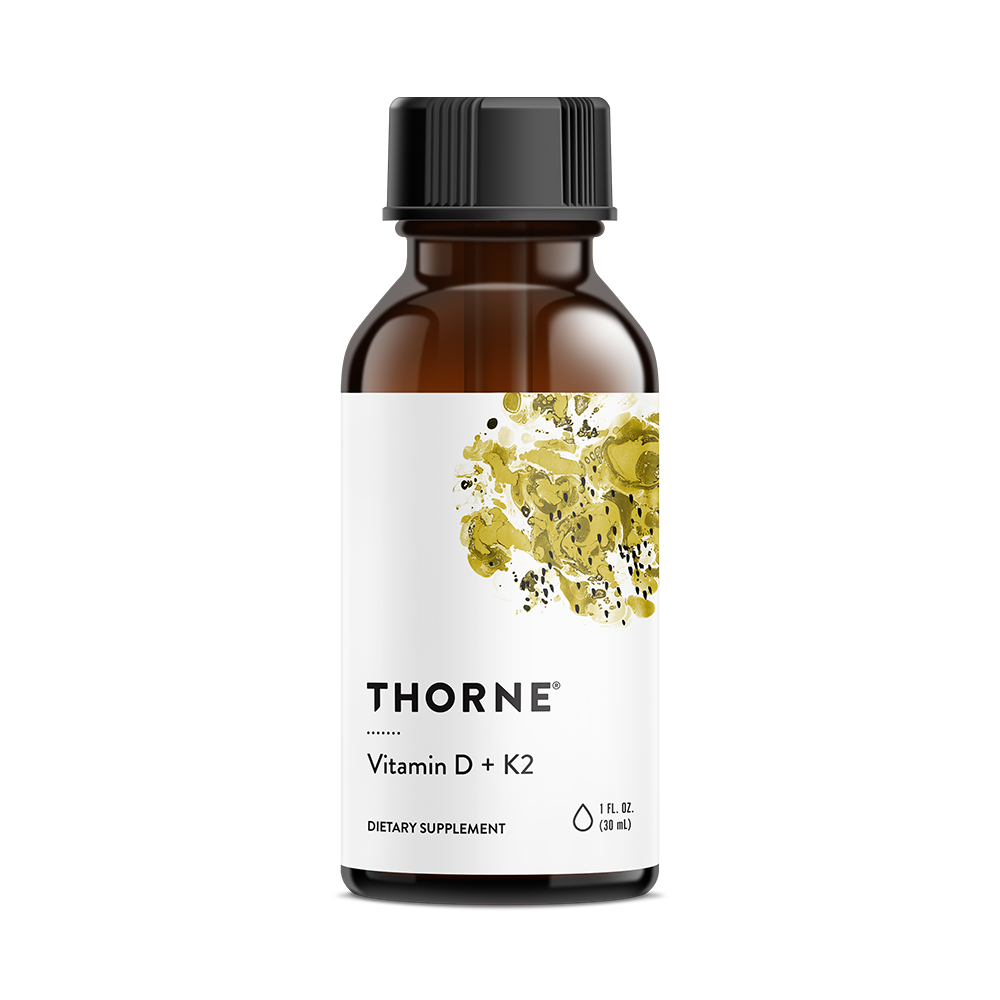Vitamin D Does a Body Good: How to keep your bones healthy!
We’ve all heard the commercials growing up that “Milk Does a Body Good!” accompanied by all the celebrities showing off their milk mustaches and kids showing off their cute little biceps wearing capes…but is that REALLY the best way to keep your bones healthy?
In this article, we will talk about vitamin D’s role in keeping your bones and body healthy, the synergy of vitamin K and other very important ways to make sure your Musculoskeletal system stays strong for decades to come.
What foods are highest in vitamin D?
Did you know cow’s milk doesn’t naturally have vitamin D? It’s ADDED or “fortified” during processing. However, absorbing vitamin D is very challenging if you drink low-fat or no-fat milk or milk products. This is primarily because vitamin D is a fat-soluble vitamin, meaning that it NEEDS FAT to be properly absorbed by the human body! YUP! Fat is a good thing when it comes to vitamin D.
As a matter of fact, foods that are rich in vitamin D are ALL fatty foods: salmon, herring, sardines, cod liver oil, tuna, lard, and egg yolks.
What is the best way to absorb vitamin D?
Your gallbladder, or more importantly, bile, plays a crucial role in breaking down fats to help make vitamin D more absorbable. If you don’t have a gallbladder or suffer from gallbladder inflammation, this can greatly reduce your ability to take in vitamin D and other fat-soluble vitamins (A, E, K) and therefore you can become deficient. *Ask us how we can help you if you no longer have a gallbladder or have gallbladder inflammation-we have an easy way to help you absorb fat-soluble vitamins with support through nutrition!
I bet you’re now saying, “but my doctor said that calcium is what I need to keep my bones strong and healthy!” Well, yeah, but that’s only a tiny portion of the bone health story. Calcium is important, but in order for you to make sure that the calcium you eat or take via supplementation gets deposited in the right places (i.e. your bones), it takes vitamin D AND vitamin K2 to make that happen—stay with me here…
Vitamin D’s role is to increase the intestinal efficacy of calcium absorption, but other non-classic roles for vitamin D have been investigated over the past several decades. In fact, vitamin D receptors are found in many tissues other than bone and the small intestine, such as in type 1 helper T cells, macrophages, the prostate, the brain, and other tissues. The role of vitamin D is truly vast!
Proper absorption of vitamin D enables your body to in turn absorb calcium, fight infection, and keeps your nervous system and muscles working as they should. The most natural, direct way to get vitamin D naturally is through sun exposure, but people tend not to get enough sun to produce adequate amounts. We are typically indoors most of the day and those living in Northern regions have less sun overall during the year. However, some people have a more difficult time absorbing vitamin D than others, and some medical conditions can make it difficult to absorb Vitamin D from food.
Here are some reasons why people may not be able to absorb vitamin D very well:
- Conditions such as celiac disease, chronic pancreatitis, Crohn’s disease, and Cystic Fibrosis. These can all affect the intestines, preventing them from absorbing vitamin D found in food.
- BMI (body mass index) higher than 30. High body fat can trap vitamin D, which is why deficiency is a greater concern in those who are obese.
- Liver or kidney disease. Both diseases can negatively affect how your body processes vitamin D. Kidney disease may cause a person to have trouble processing vitamin D to its active form, which is used throughout the body. Some forms of liver disease cause problems with fat absorption, also making it harder to absorb vitamin D.
- Radiation treatment. This type of cancer treatment can make it harder for the intestines to absorb vitamin D.
- Weight loss surgery. These procedures reduce the size of the stomach or bypass part of the small intestine, making it harder for the body to absorb adequate levels of many vitamins and minerals including vitamin D.
What is the K2 vitamin good for?
Now, how about vitamin K2? As we mentioned above, vitamin D helps the body absorb the calcium, but K2 makes sure that it doesn’t get deposited in your arteries, (which can lead to atherosclerosis which is not so good for the ‘ol ticker)—but in your bones and can be utilized by the muscle tissue for contraction. Cool, huh?
Note: Magnesium and potassium play a role in all of this, but that’s for another blog, let’s just keep it on these two vitamins for now.
How can osteoporosis be managed?
If you’ve kept up with me for this long, it’s most likely because you’ve been told by your doctor that you are low in vitamin D and/or you are worried/have about osteoporosis and would like some solutions. If that’s the case, here are some great body hacks that will help you do just that!
- Take quality vitamin D/K2 supplement. The amount you take is based on how low your vitamin D levels are, so that’s an important metric to have prior to supplementing. If you currently don’t have your numbers, a good place to start is 2000 IU’s daily. The current Recommended Daily Amount (RDA) for adults is 800 IU daily, however, that’s based on the amount it takes not to get Rickett’s, NOT to stave off osteoporosis or keep your heart and immune system healthy. NOTE: If you are currently on any blood-thinning medications, it is contraindicated to take K2. At HealthWorks, the supplement we prefer is Thorne’s Vitamin D3/K2 drops. It’s in a liquid form and each drop is 500 IU’s of D3 with a synergistic amount of K2 in a fat (MCT oil) for optimal absorption
.
- Weight-Bearing Exercises. Yes! Lifting and pushing heavy objects is beneficial to bones! As with loss of muscle mass, bone strength starts to decline earlier than you think, going down at an average rate of 1% per year after age 40. Studies show that over 10 million Americans have osteoporosis, Weight-bearing exercise can help to slow bone loss, and several show it can even build bone. Activities that put stress on bones stimulate extra deposits of calcium and nudge bone-forming cells into action. The tugging and pushing on the bone that occurs during strength and power training provide stress. The result is stronger, denser bones.
This concept is based on a law of physics called Wolff’s Law. In 1892, Dr. Wolff’s theory about bone transformation was published. One hundred years later, bone remodeling is now a medical fact!
Wolff’s Law states that bone will adapt to the load or stress placed upon it. This means that increased loading of bone tissue will promote increased density. Therefore, many individuals with osteopenia or osteoporosis utilize resistance training to stimulate bone growth. However, when the stress or load on the bone is abnormally loaded, Wolff’s Law can contribute to the progression of spinal degeneration. *This is why doing these exercises safely and appropriately is key! Keep reading to see what we recommend!
A common misconception about spinal degeneration is that it is a normal age-related process. This would mean that most people would exhibit the same level of degeneration at roughly the same age. The truth is that spinal degeneration and osteoporosis progress with time but is not necessarily a normal aging process. There are other factors influencing the progression of spinal degeneration.
In the spine, a similar process plays out with spinal degeneration and osteoporosis. As abnormal pressure builds up on the segments of the spine, the increased demand requires more support. The wear and tear associated with increased stress around the joints of the spine will stimulate bone cells to produce hardened tissue to help support the abnormal load. This makes the spine more rigid, and spinal degeneration begins to advance.
If you currently have osteoporosis, being safe while exercising is very important. If you would like a safe and HealthWorks recommended place to go, we recommend OsteoStrong. They have a few locations in the Dallas Fort Worth area, so be sure to look them up and get an initial evaluation done. If time is an issue, we recommend Slo-Fit. It’s only 30-minutes, once a week, and uses a weight circuit that is meant to stress muscles, and bones and increase metabolism by creating more lean muscle. They have one location in Plano. Note: The main problem osteoporosis poses for patients is the loss of bone density. This means bones become considerably weaker, more brittle, and more fragile, increasing the likelihood of bone fractures or breaks. Slips, falls, and overexertion all pose huge risks for sufferers of this condition. So, be sure to pick the very best type of exercise for your fitness status. If you have any questions or concerns, be sure to ask one of the doctors at HealthWorks.
- Chiropractic Care! Chiropractic adjustments not only enhance the nervous system and joint function but can also restore bone density. Adjustments to the spine and other key areas have the potential to stimulate cells that replace bone. This is key for osteoporosis patients who need to strengthen their bones and for those that wish to prevent osteoporosis and keep their bones in tip-top shape. Not only can chiropractic start the healing process, but it can also act as a preventative measure against future problems like balance issues which can result in a slip or fall that can cause a hip or other bone fracture. Routine adjustments have the potential to increase mobility, limit pain, restore joint function, and improve overall health. Beyond adjustments, HealthWorks utilizes complementary treatments such as nutrition counseling, relaxation techniques, therapeutic massage (deep tissue and vibracussion), infrared heat therapy, and your doctor-recommended, personalized, low-impact exercise. All of these supplemental treatments are a comfortable and gentle way for anyone to keep their Musculoskeletal system strong and healthy.
If you already suffer from osteoporosis and would like an option that can reduce your need for painkillers or other medications, chiropractic offers amazing benefits for managing osteoporosis, with almost zero side effects. This low-impact, non-invasive treatment style is also ideal for those living with a condition that reduces bone density and results in fragility. Further, it’s suited to restore mobility, maintain posture, and mitigate other symptoms of osteoporosis. For a natural, low-impact way to effectively address osteoporosis and its many symptoms, without taking potentially harmful medications, there’s chiropractic. HealthWorks offers personalized treatment options, low-impact adjustments, and a slew of complementary modalities, it’s possible for those with osteoporosis to raise the bar for quality of life in the face of a condition that might otherwise lower it. There is hope!
Our promise to you
HealthWorks is dedicated to a comprehensive and specific approach to taking care of spinal and nervous system needs. Let us help you find out how taking care of the most important system in the body will create optimal health that will last a lifetime. Don’t grow old fast, but beat the causes of spinal degeneration, osteoporosis, and pain today!

 .
.